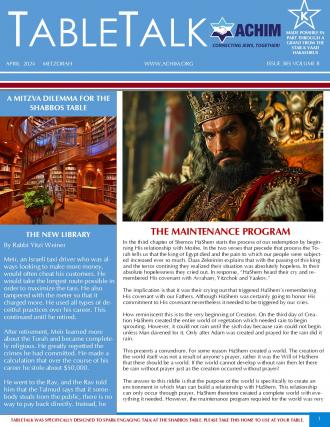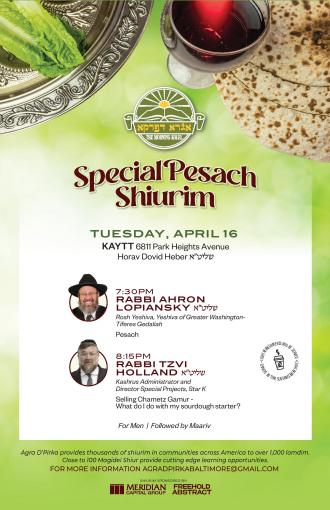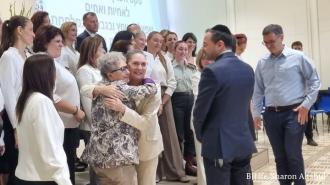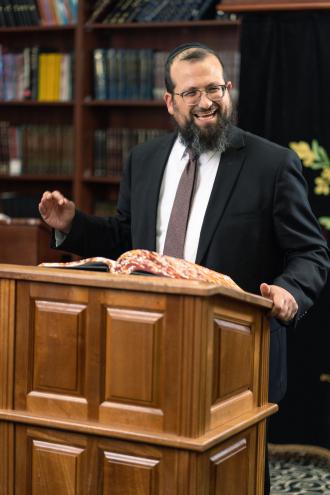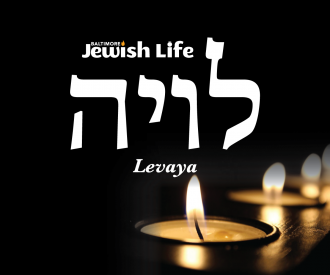Adam and Eve had three sons. The first two were the famous Cain and Abel. The third is introduced in the following manner. “When Adam had lived 130 years, he begot a son in his likeness after his image [bid’muso k’tsalmo], and named him Seth” (Gen. 5:3). Similar language is used in describing the creation of Adam: “And G-d created man in his image [b’tsalmo]” (Gen. 1:27), but not with the birth of Cain and Abel. Why is this? The Sforno asks this question, and gives the answer: because Seth was more of a tzaddik than the previous sons.
Now, as far as Cain is concerned, this is clear. He did, after all, murder his brother. But what about Abel? Why was he not a tzaddik? All we know about Abel is that he brought an offering to the L-rd, as a result of observing Cain’s offering. The Sforno explains: that was just the problem! The idea of making an offering, commendable as it was, was not Abel’s original idea, but copied from Cain, and that is what prevented him from being as great a tzaddik as Seth.
This answer seems strange, if we think about it. For in Judaism we are supposed to follow assiduously a tradition which goes back to Moses on Sinai. We are not supposed to do our own thing. (Aaron’s two sons, Nadav and Avihu, were killed for improvising in their priestly duties!) So how can we understand the Sforno’s argument?
I think the answer is this. In Judaism we have to tread a very fine line. On the one hand, it is true that we have to observe the tradition, and preserve the Torah exactly, neither subtracting nor adding to it a scrap. On the other, each of us is expected, within these narrow confines, to be creative! Some examples may clarify this.
One of the most prestigious yeshivas in Europe was the Yeshiva at Slobodka, in Lithuania. Its fame was largely due to its head, the famed Alter of Slobodka. (Alter was a term of respect and endearment.) This was used for advanced training in “mussar”, as a sort of finishing school for successful graduates from other yeshivas. Now four of the most successful yeshivas in America were either founded or developed by graduates of Slobodka, whose stated aim was to follow the Slobodka method: Lakewood Yeshiva by R. Aharon Kotler, Ner Israel in Baltimore by R. Yaacov Ruderman, Chaim Berlin in New York by R. Yitzchock Hutner, and Chafetz Chaim in New York by R. Dovid Leibowitz. But each of these yeshivas has its own unique character, and each of these four distinguished Roshei Yeshiva is or was quite different from the other three. This is partly to their own credit, that each was able to develop his individual style within the single framework of the “Slobodka method”, and partly to the credit of the Alter of Slobodka , who did not attempt to force his students into a single mold.
In the Shabbos Shmoneh Esreh, we say: “And give us our portion in your Torah”. The Gra (Vilna Gaon) asks: Why does it say this? Why not simply: “And give us Torah?” He answers: Each of us has his or her own portion in the Torah, which means an insight which is uniquely that person’s. If any of us does not use his creativity to find this unique insight—or worse, does not study Torah at all!—then that special insight will be lost to the world forever.
The daily Shmoneh Esreh includes the phrase: “the G-d of Abraham, the G-d of Isaac and the G-d of Jacob”. The Gra (in another place) asks: Why not add “… and the G-d of Moses”? After all (as we recently read on Simchas Torah) “Never again did there arise in Israel a prophet like Moses, whom the L-rd knew face to face” (Deut. 34:10). So as a prophet, he was greater than the Patriarchs. The Gra gives the answer: As great as Moses was, he was a conduit between G-d and the Israelites. Abraham was creative—he figured out monotheism on his own—and, similarly, Isaac and Jacob were creative. That is the special merit of the Patriarchs.
This Shabbos we begin a new cycle of Torah readings. I urge all of you to try, each week, to study the Torah portion as much as you are able—in Hebrew or English, with Rashi or some other commentator, if you have the time—or if not, perhaps the simple text this year, and the text with Rashi next time around. I am constantly amazed at the fresh insights I get from beginning students, in their reading of the Torah—insights that I have not found in any of the commentators!
It is my hope that all of us, beginning as well as advanced students, may find, and share, his or her unique insight in the Torah.
This drasha was given at the Saranac Synagogue in Buffalo on Shabbat Bereshit, 29 Tishri 5748 (1987), and transcribed from memory by Jeffery Zucker.




